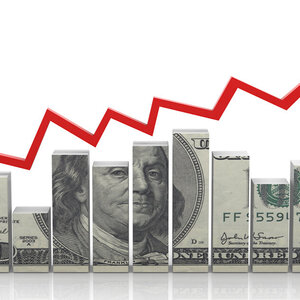Commercial Real Estate News

2025 Prediction: U.S. Commercial Investment Recovery Expected to Gain Traction
Commercial News » New York City Edition | By Michael Gerrity | December 13, 2024 8:53 AM ET
Even as interest rates remain elevated for an extended period
The U.S. economy is poised for above-average growth in 2025, fueled by robust consumer spending. However, persistent inflation could result in prolonged higher interest rates, according to CBRE's 2025 U.S. Real Estate Market Outlook.
CBRE predicts several positive trends for the year, including a modest rise in commercial real estate investment, stabilization of office market vacancies, and increasing occupancy and rents in the multifamily sector despite substantial new construction.
Higher U.S. tariffs on foreign goods are expected to impact the retail and industrial & logistics sectors, triggering inventory surges, onshoring of manufacturing, and elevated retail prices later in the year. In the data center market, supply will remain insufficient to meet high demand.
"The U.S. economy has achieved a rare soft landing in the face of higher interest rates, and the outlook for growth in 2025 is increasingly optimistic," said Richard Barkham, CBRE's Global Chief Economist and Global Head of Research. "Risks to this outlook include the large U.S. fiscal deficit, which adds to bond market volatility, and the fragility of the Chinese economy."
U.S. Economic Forecast
The U.S. economy is likely to expand by 2% to 2.5% in 2025, with inflation stabilizing at 2% to 2.4%, unemployment steady at 4% to 4.5%, and the 10-year Treasury yield exceeding 4%. Strong corporate earnings and stable banking conditions will offset challenges like import tariffs and high debt costs. Risks include slower Federal Reserve rate cuts if inflation resurges and global uncertainties, such as a potential recession in China and U.S. dollar appreciation.
Capital Markets
CBRE projects a 10% increase in investment activity, driven by improved economic confidence and higher property returns. While debt capital costs will remain elevated, capitalization rates are expected to decline slightly, enhancing property valuations.
Office Market
The office market is likely to stabilize in 2025, with a 5% increase in leasing activity and the national vacancy rate peaking at 19%. Prime office spaces may experience vacancy rates as low as 8.2% by 2027, making premium locations increasingly competitive.
Retail Sector
Retail rents are projected to rise as availability remains below 5%, due to limited new construction. Markets like Phoenix, Austin, Dallas, Nashville, and Charlotte are expected to attract strong retail activity, supported by population and job growth.
Industrial & Logistics
Trade policies will bolster demand for industrial facilities near the U.S.-Mexico border and along major north-south transportation corridors. Leasing activity is forecast at over 800 million sq. ft., with third-party logistics providers accounting for a significant share. Construction is expected to slow considerably after years of robust building.
Multifamily Market
The multifamily sector will benefit from easing construction pressure, with vacancy rates expected to decline to 4.9% and rents to rise by 2.6%. Sun Belt states will dominate new construction, while overall starts will fall 30% below pre-pandemic averages.
Data Centers
Driven by the AI boom, demand for data center space will surge, reducing vacancy to 2.8% and pushing prelease rates to 90%. Construction activity will reach record highs, and alternative energy sources like nuclear will gain attention.
Sign Up Free | The WPJ Weekly Newsletter
Relevant real estate news.
Actionable market intelligence.
Right to your inbox every week.
Real Estate Listings Showcase
Related News Stories
Commercial Real Estate Headlines
- 2025 Prediction: U.S. Commercial Investment Recovery Expected to Gain Traction
- Holiday Retail Sales for 2024 to Hit Record $1 Trillion
- Tech, AI Industries Drive Largest Share of Office Leasing Activity in U.S.
- Commercial Real Estate Lending in U.S. Enjoys Strong Growth in Q3
- U.S. Multifamily Market Begins Recovery in Q3
- Commercial Investment in Japan Spikes 24 Percent Annually in Q3
- Despite Return-to-Office Mandates, U.S. Office Vacancies Continue to Rise
- PROPSIG Tech Startup Acquired by World Property Data
- U.S. Commercial Mortgage Debt Hits $4.7 Trillion in Q2 as Delinquencies Increase
- Hong Kong Class A Office Rents Continue to Downtick in Mid-Summer
- U.S. Office Landlords Tenant Concessions Decline for First Time in 4 Years
- U.S. Commercial Mortgage Originations Spike 27 Percent in Q2 Over Q1
- Phnom Penh's Commercial Office, Retail Markets Face Slowdowns in 2024
- Global Edge Data Center Market to Hit $300 Billion by 2026
- Commercial Property Transactions in Japan Dive 25 Percent Annually in Q2
- Delinquency Rates for U.S. Commercial Property Loans Downticks in Q2
- Megawarehouse Lease Deals in U.S. Increase in 2024
- Office Tenants' Flight to Quality Buildings Increases in 2024
- Commercial Lending in Japan Upticks 6 Percent Annually in Q1
- AI Driving Significant Global Data Center Growth in 2024
- Total U.S. Commercial Mortgage Debt Rises to $4.7 Trillion in Q1
- U.S. Commercial Mortgage Delinquencies Rise in Early 2024
- Asia Pacific Office Sector to Further Reprice Throughout 2024
- U.S. Retail Foot Traffic to Surpass Pre-Pandemic Levels by 2025
- Commercial Real Estate Lending in U.S. Slowed in First Quarter
- Japan Commercial Property Investment Volume Jumps 7 Percent in Q1
- Asia Pacific Commercial Property Investment Leads the World, Spikes 13 Percent
- Driven by High Rates, U.S. Commercial Lending Imploded 47 Percent in 2023
- After Two Year Slump, Prime Multifamily Metrics Uptick in U.S.
- Commercial Co-Broker Commissions Not Affected by NAR-DOJ Settlement, Yet
- U.S. Office Buildings with Upscale Tenant Amenities Still Enjoy Premium Rents in 2024
- U.S. Commercial, Multifamily Mortgage Delinquency Rates Uptick in Q4
- U.S. Commercial Mortgage Debt Continued to Rise in 2023, Hits $4.7 Trillion
- Nonresidential Construction Spending in the U.S. Falls Sharply in January
- U.S. Multifamily Construction Starts to Decline in 2024
- Commercial Mortgage Lending in U.S. Shows Signs of Stabilization in Late 2023
- Architecture Billings Decline in December as Soft Business Conditions Persist
- Government Sector Claimed Largest Portion of 100 Biggest U.S. Office Leases Signed in 2023
- U.S. Commercial, Multifamily Borrowing Dives 25 Percent Annually in Late 2023
- Record High Multifamily Construction Deliveries Drive Vacancy Rates Higher





